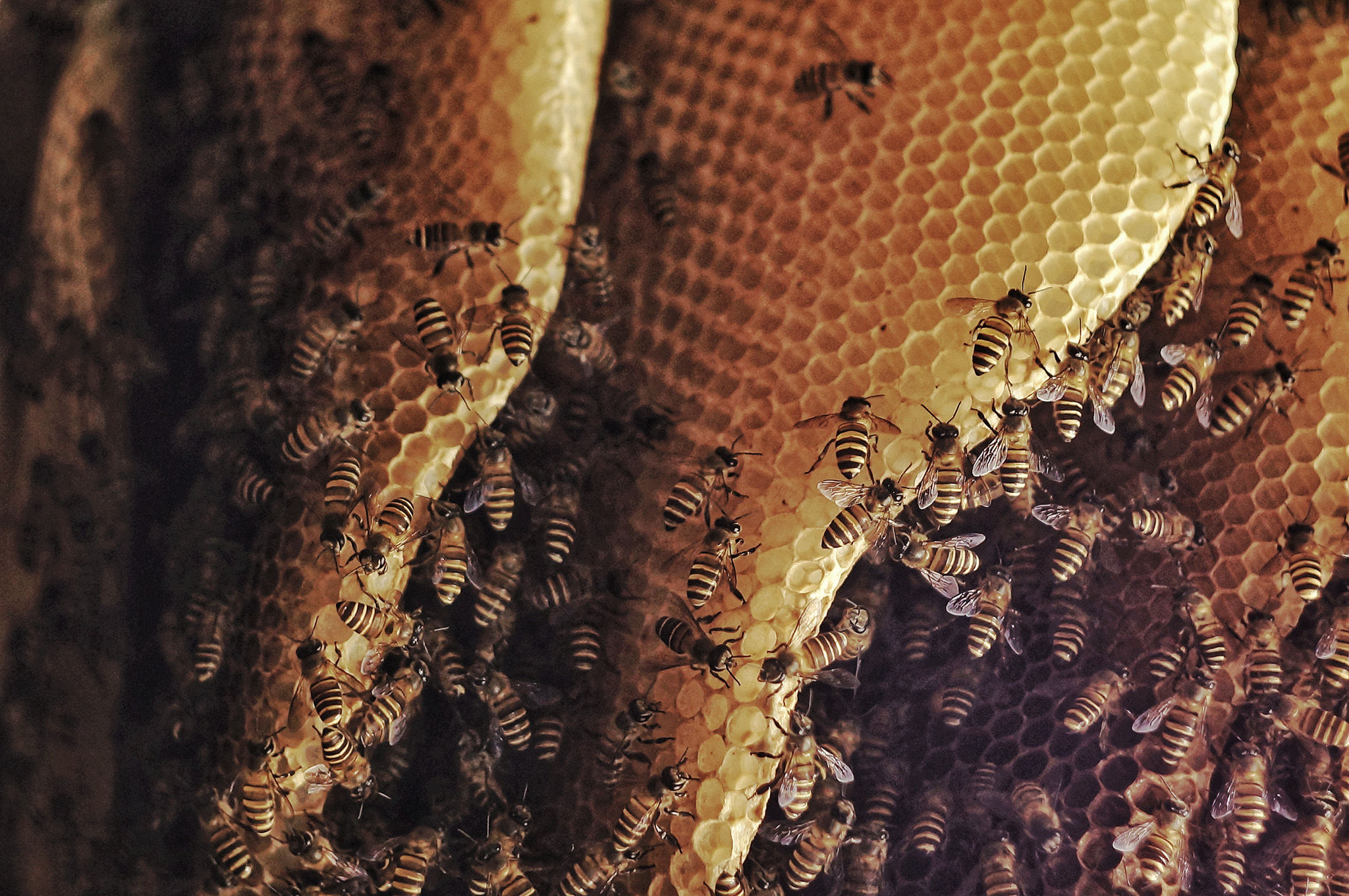
Opening a jar of raw honey is like opening a gift from nature especially when you know the incredible story of how it's made by the honey bee or, to give its Latin genus name, Apis Mellifera. Honey is the only food consumed by humans that comes from an insect and an average worker bee makes only 1/12 teaspoon of honey in its lifetime.
Apis Mellifera or the honey bee is native to Europe, western Asia, and Africa. They were introduced to other continents, including Australia and North America, in the 17th century, and now are found all around the world. Currently, there are 26 recognized subspecies which pollinate billions of dollars’ worth of commercial agricultural crops around the world each year.
In mythology, ancient Greeks and Romans believed that bees were servants of the gods and goddesses.
In ancient Egypt, it was believed that Ra, the sun god, created the honey bee from his tears. When the tears touched the earth they turned into bees which were said to carry messages from heaven.
The ancient Greeks consulted several oracles, the most important being at Delphi. The temple at Delphi was said to have been constructed entirely by bees. Within the temple was an object called an Omphalos, believed to be the source of wisdom; a stone carved into the shape of a beehive and decorated with bee-like images. Phythia, the chief priestess at Delphi, was called ‘The Delphic Bee’. Priestesses of Greece were called Queen Bees.
Bees feed on pollen and nectar collected from flowers that they turn into honey (stored concentrated nectar). They use their tongues to suck up the nectar and store it in the anterior section of the digestive tract, called the crop. They collect pollen by brushing it off the bodies and onto their hind legs in special structures called pollen baskets.
They like to forage during daylight hours but don’t like extreme temperatures, heavy rain or strong winds. During warm, calm weather, honey bees collect the most pollen even when it is cloudy. So look out for them and you will see them gathering around flowers, trees and bushes happy going about their business.
When a foraging honey bee returns to the hive it transfers the nectar to younger worker bees who then feed other members of the hive, or process it into honey for long-term storage. They do this by adding enzymes to the honey which they store in open cells capped with wax.
The bee colony
Colonies consist of a single queen, hundreds of male drones and 20,000 to 80,000 female worker bees depending on seasonal changes. Each honey bee colony consists of developing eggs, larvae and pupae. A colony is most active and at full occupancy during the summer when workers forage and store honey for winter by building honeycomb. They decrease in numbers during colder seasons.
Each caste of bee performs specific tasks within the colony and they rely on this for survival. So, while queens are extremely powerful within their societies, they cannot establish new colonies without the help of drones and workers, who provide fertilization, food and wax to construct the hive. All members of a honey bee colony undergo complete metamorphosis, passing through the egg, larval and pupal stages before becoming adults when they emerge and begin to perform specialized tasks for the colony.
The queen is the only member of a colony able to lay fertilized eggs and she is important in establishing a strong honey bee colony, and she is capable of producing up to 2,000 eggs within a single day. The queen can live to five years but usually only lives two to three years producing eggs.
Worker bees are entirely female, but they are unable to produce fertilized eggs. Workers are essential members of honey bee colonies as they forage for pollen and nectar, tend to queens and drones, feed larvae, ventilate the hive, defend the nest and perform other tasks to preserve the survival of the colony. The average life span of worker bees is approximately six weeks.
Drones, or male honey bees, have only one task which is to fertilize new queens. Drones mate outdoors usually in mid-air and die soon after mating.
Honey bee swarming is a natural part of a developing colony and it happens when the hive is overcrowded. An old queen leaves the hive with about half of the hive’s worker bees, while a new queen remains in the old hive with the rest of the workers. Swarming honey bees fly temporarily, and then cluster on shrubs and tree branches until a new site is located by the scout honey bee. If you ever get a swarm in your garden contact your local beekeeper and they will remove it.
Perceptive little creatures, honey bees are driven by scent and taste. They are bound to each other via chemical signals that indicate the health of the queen and state of the colony. Each hive has a unique chemical signature that bees within that hive use to recognize each other and detect invader bees from other colonies. When a worker stings an intruder, an alarm pheromone is released that causes other bees to help locate the enemy.
There is so much we can learn from the honey bee and plenty to be thankful for when opening a jar and tasting the end product, a delicious serving of raw honey.
Related posts you might find interesting:
Sign up for exclusive offers, recipes and the latest raw honey news.